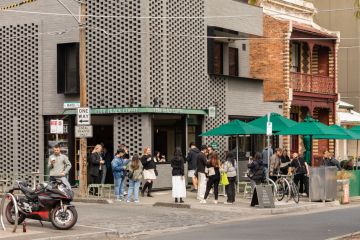Sitting on the strata committee

All property owners with a desire to make a difference to the running of their strata title building have the opportunity to join the body corporate’s executive committee. Strata Community Australia’s president, Erik Adriaanse, encourages owners to get involved, but insists they first understand the volunteer role before accepting it.
Know the basics
An executive committee acts on behalf of the owners’ corporation and is responsible for the maintenance and upkeep of all common areas in strata titled developments. That means if something goes wrong in a common area, the committee has to handle it: from leaking roofs and chipping corridor wall paint to storm damage and beyond.
The volume of work undertaken by a committee and its members is dictated by the proactive and reactive works required.
Proactive works are usually planned a year in advance and carried out in accordance with the sinking fund plan (an annual maintenance plan based on expenditure derived from strata levies).
“The committee will know how long the lift is expected to last and when major painting works will need to be carried out,” Adriaanse says.
“Reactive works occur when things go wrong: communal property gets damaged, people run into garage doors, locks fail, storm damage and water damage [occur].”
Executive committees are also responsible for changing existing by-laws and making new ones.
Get involved
Adriaanse explains that body corporate executive committees resemble corporate boards and run effectively when its members boast a range of skills. He encourages property owners with expertise in office administration, communications, law, procurement, building or finance to consider volunteering.
“To volunteer, the process is as simple as attending the AGM and putting your hand up,” says Adriaanse.
Executive committees consist of one to seven-plus members, depending on the state or territory in which they’re located. Each sitting term runs for a year – from one AGM to the next. So if the committee is at capacity and you want to get involved, you will have to wait a year for a vacancy or until a committee member sells their property.
Your role
The committee divides its functions and responsibilities among its members. Your role on the committee will partly be determined by your skill set and the reason you were elected. For example, Adriaanse says, he is a former certified public accountant so he is responsible for his committee’s finances and accounting.
“A committee member’s role is all about making decisions. If you don’t know anything about building processes then it’s not the end of the world, as this job involves liaising with tradespeople and overseeing a process.”
Committee members will usually be allocated proactive duties during meetings and reactive tasks as and when they arrive. Typically, he says, committee members will organise works and the strata manager will ensure they are carried out to the desired quality.
Consideration checklist:
- Volunteers are expected but not obliged to attend either monthly or quarterly meetings to resolve issues and forward plan works. How much time can you donate to the role?
- Are you willing to always be ‘on call’ to respond to property emergencies?
- The tone of committee meetings will vary according to its members and chairperson. Would you like to join a social or a formal committee?
- Solving common property problems means communicating with property owners and tradespeople. Are you a good communicator?
- Are you open to regular email and phone correspondence to contribute to group decisions outside the meetings?
“If you want to have a say, then you should be part of the executive committee. You will make a difference by helping to create a better building in your community. The more people who put their hand up to volunteer, the better.”
We recommend
We thought you might like
States
Capital Cities
Capital Cities - Rentals
Popular Areas
Allhomes
More







